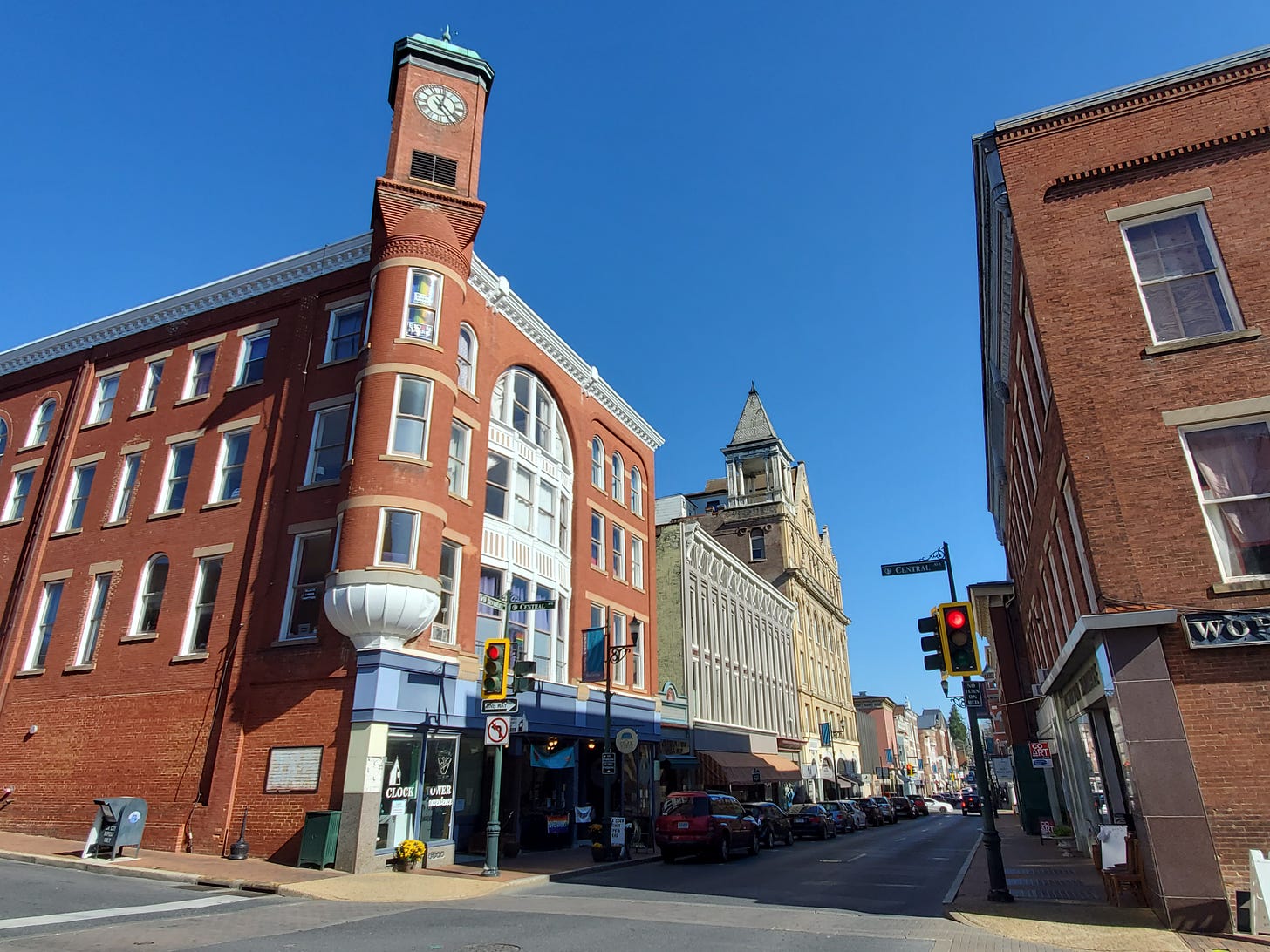Small Towns Are Everywhere And They All Look The Same
It isn't the "sameness" of sprawl that we dislike
Here are a few towns/small cities, mostly from the east coast:
They’re all unique, but the similarities are also very strong. Purely in terms of visual variety, I don’t think they’re that much different from each other than a suburban commercial strip is from state to state.
And yet, nobody ever says, “Small towns all look the same.” Or if they do, they don’t mean it as a criticism. But we talk about sprawl in those terms. We make fun of every Walmart having the same floorplan (a lot of them, anyway). We make fun of a fake façade to make a Walmart look like a barn, or something. I think this is interesting. People will cite “sameness” as a drawback of suburbia, but they’re really trying to express something else. If we like the thing that’s duplicated with minimal difference, then the sameness is okay! And we like small towns, which is to say, traditional urban development.
Now I want to show you a photo from Sicily, of the old city of Ragusa:
These old European cities don’t look much like anything in America, but they do frequently look like each other. Driving out of Ragusa, we passed another very similar-looking hilltop town about an hour later. “Uh oh, we didn’t end up turning back around, did we?” I said. I was half-joking, but I did actually check the map. They looked that similar! Same vantage on a hill, same architectural style, same church dome.
By the time our trip was over, we’d point at every little hill town and say “Is that Ragusa?” But of course, we weren’t sick of seeing or exploring them, because the similarity doesn’t take away from the appeal of the thing itself.
I don’t think I ever thought about any of this prior to getting interested and professionally involved in urbanism. I used to say, “Every suburb looks the same” or “Every big-box store looks the same,” and I think I thought that was why I didn’t really love them. Now I realize there’s a much deeper thing going on—an affinity or an aversion to a kind of design that does or doesn’t work with something in us.
Related Reading:
What If Suburbia Still Looked Like This?
Thank you for reading! Please consider upgrading to a paid subscription to help support this newsletter. You’ll get a weekly subscribers-only piece, plus full access to the archive: over 800 pieces and growing. And you’ll help ensure more like this!









Whether the small towns of the Northeast or the villages of Sicily, all of your photos have in common walkable, mixed use places. Wal-Marts and other big boxes stores don't have that. Suburban sprawl neighborhoods don't have that (or have it in a very limited capacity). I think that's a big part of what people are responding to.
I think this is completely correct and now I am going to go crazy figuring out is actually going on. Some of it may be that the sheer scale of big box stores means that there is a lot less visual interest; having a bunch of tiny shops makes for a more human-scale variety.
Also, having different brands matters--part of the sameness is literally the chain store issue.